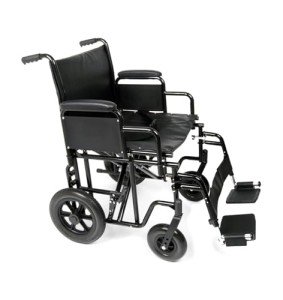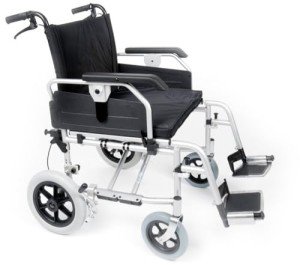Nine Things That Your Parent Teach You About Bariatric Wheel Chair
페이지 정보
작성자 Coy 작성일25-03-31 14:25 조회3회 댓글0건관련링크
본문
 Advantages of a bariatric wheelchair 400 lb capacity wheel chair (https://tran-liu-2.technetbloggers.de/10-quick-tips-for-bariatric-wheelchair-for-Sale-near-me)
Advantages of a bariatric wheelchair 400 lb capacity wheel chair (https://tran-liu-2.technetbloggers.de/10-quick-tips-for-bariatric-wheelchair-for-Sale-near-me)A bariatric wheelchair weight limit wheelchair is created to handle a higher weight capacity than basic wheelchairs, varying from 300-700 pounds. They are typically categorized as heavy duty power wheelchairs by Medicare and may require a prescription.
Features like a "no-lift" tilt and helped back recline save caregivers from straining during rearranging. Seats with superior pressure redistribution, such as Broda's Comfort Tension Seating, reduce the threat of pressure ulcers.
Convenience
Whether at home or at the health care facility, comfort is just as crucial for bariatric clients as it is for any other kind of patient. Specialized wheelchairs provide the capability to accomplish this in a number of methods, including stronger frames and larger seats that make it much easier for bigger users to move and stay stable during movement.
A wide variety of devices is likewise readily available to maximize the comfort and functionality of a bariatric chair. From cushioned raising footrests that are adjustable and can swing away, to desk-length arm rests that are easily moved, these devices can offer the extra support and stability needed for comfy usage.
Other vital functions to try to find in a bariatric wheelchair include reclining ability, and support around the gluteal location to promote appropriate posture and lower pressure injuries. Some chairs even include a front-to-back tilt feature to relieve the sit-to-stand transfer process and help lessen caregiver stress. In addition, wheelchair cushions can play an important function in reducing pressure injuries and ensuring user comfort. The AliMed Bariatric Tri-Foam Cushion is particularly developed with a distinct layering system that provides sophisticated pressure redistribution, avoiding the accumulation of heat and wetness and reducing the risk of pressure ulcers.
Last but not least, try to find a bariatric chair with seating that is personalized to fit the needs of each individual user. Some manufacturers, like Broda, style chairs with a range of adjustments and features to help find the best fit. For example, the Vanguard Bariatric Wheelchair offers a "no-lift" tilt and assisted back recline that are operated by a hassle-free foot pump to reduce the user into position without straining the caretaker.
A crucial piece of recommendations when buying a bariatric wheelchair is to get a thorough seating assessment from a health care professional. This will provide a comprehensive view of the person's sizing needs, mobility goals, and activities of day-to-day living. It will likewise function as documentation of medical requirement for insurance functions. Ultimately, this will ensure that the chair fits effectively and offers the ideal level of convenience and performance.
Mobility
When you utilize a bariatric wheelchair weight wheelchair, you can experience freedom and mobility without fretting about security. These specialized chairs are broader and more durable than standard wheelchairs, and they can deal with a higher weight capacity. They also use pressure redistribution and repositioning features to help prevent pressure sores. This makes them the very best option for obese and overweight users with a Body Mass Index (BMI) of 30 or greater.
Whether you require to visit family, pals, or go shopping, a bariatric wheelchair can assist you keep your self-reliance and lifestyle. In addition, you'll have the ability to fraternize others in your community without the risk of being unpleasant or risky.
These specialized wheelchairs are developed with strengthened elements, extra padding, and a bigger seat and back to accommodate a higher weight capacity and range of user sizes and shapes. They can likewise be gotten used to supply assistance around the gluteal area, which is especially important for those with lung or cardiovascular conditions who may need a specific position to help them breathe.
The Vanguard Bariatric Wheelchair, for example, is designed to allow users to navigate quickly throughout the home and social environment, while providing industry-leading security functions. The chair's "no-lift" tilt and helped back recline are operated with a foot pump to save caregivers from straining during rearranging and minimize the danger of injury. The chair's distinct Comfort Tension Seating system likewise adjusts to accommodate the variety of bariatric wheelchair 26 inch seat physique and offers proper postural assistance, decreasing the danger of pressure injuries.
If you're interested in a bariatric wheelchair, speak to your doctor or therapist about your requirements. They can assess your medical status and physical condition, evaluate your living scenario, and make suggestions for the ideal chair to fulfill your particular needs. Sometimes, your physician might likewise suggest a rehabilitation expert who can assist you through the procedure of selecting the ideal chair for your particular way of life and capabilities. They can also encourage you on funding alternatives, consisting of whether your insurance coverage strategy covers bariatric wheelchairs.
Self-reliance
Utilizing a bariatric wheelchair that supplies adequate positioning and support allows users of up to 750 pounds to stay more independent in activities of daily living. Wheelchairs with specialized placing functions like no-lift tilt and assisted back recline assistance lower caregiver stress while providing a more comfortable seating experience for the user. Accessory alternatives like calf pads that accommodate bigger leg sizes and a range of armrest heights provide the choice to choose the very best fit for a wide variety of clients. These specialized adjustments make it simpler for a client to do things like self-feeding, grooming, and getting in/out of the shower. These are the little things that can add up to a more fulfilling lifestyle for somebody with bariatric needs.
Sturdy strengthened frame, casters and weight bearing points guarantee sturdiness.
Safety
A bariatric wheelchair has a greater weight capacity than basic chairs, allowing it to comfortably support overweight individuals. Nevertheless, an individual's frame size, shape and structure also contribute in whether a bariatric chair is appropriate for them. For instance, those with large thighs might require a bariatric wheelchair that offers sufficient room to prevent pressure ulcers.
A key safety feature is the chair's load capacity, measured by its static and active load capabilities. Static load refers to the quantity of weight that a chair can hold while sitting still, and active load is determined by performing a drop test on the wheelchair to mimic a person plopping down into it.
The specialized frames of bariatric wheelchairs are enhanced to ensure stability and safety. In addition, lots of have adjustable parts that permit a personalised fit. A well-fitting seat is important for a comfy trip, as shallow seats trigger a shift of weight forward that can increase instability. Deep seats can likewise push on knees, which causes pelvic rotation that can lead to a higher danger of falls. On the other hand, seats that are too wide can trigger skin shearing and turn the legs inward, putting stress on hips and joints.
Selecting the right wheelchair for an overweight client also needs considering their day-to-day activities, way of life and environments. For instance, those with long commutes may require a bariatric wheelchair with long lasting tires and casters that can deal with rough terrains, in addition to a more steady seat with a greater weight capacity to accommodate heavy clothing and extra padding.
 Healthcare experts such as physical therapists and occupational therapists can assist to determine which kind of wheelchair is best for their clients. Often, these experts recommend bariatric wheelchairs with pressure redistribution and rearranging features to help lessen the risk of pressure injuries. These functions can make a substantial distinction in enhancing a patient's convenience and general quality of life.
Healthcare experts such as physical therapists and occupational therapists can assist to determine which kind of wheelchair is best for their clients. Often, these experts recommend bariatric wheelchairs with pressure redistribution and rearranging features to help lessen the risk of pressure injuries. These functions can make a substantial distinction in enhancing a patient's convenience and general quality of life.댓글목록
등록된 댓글이 없습니다.
